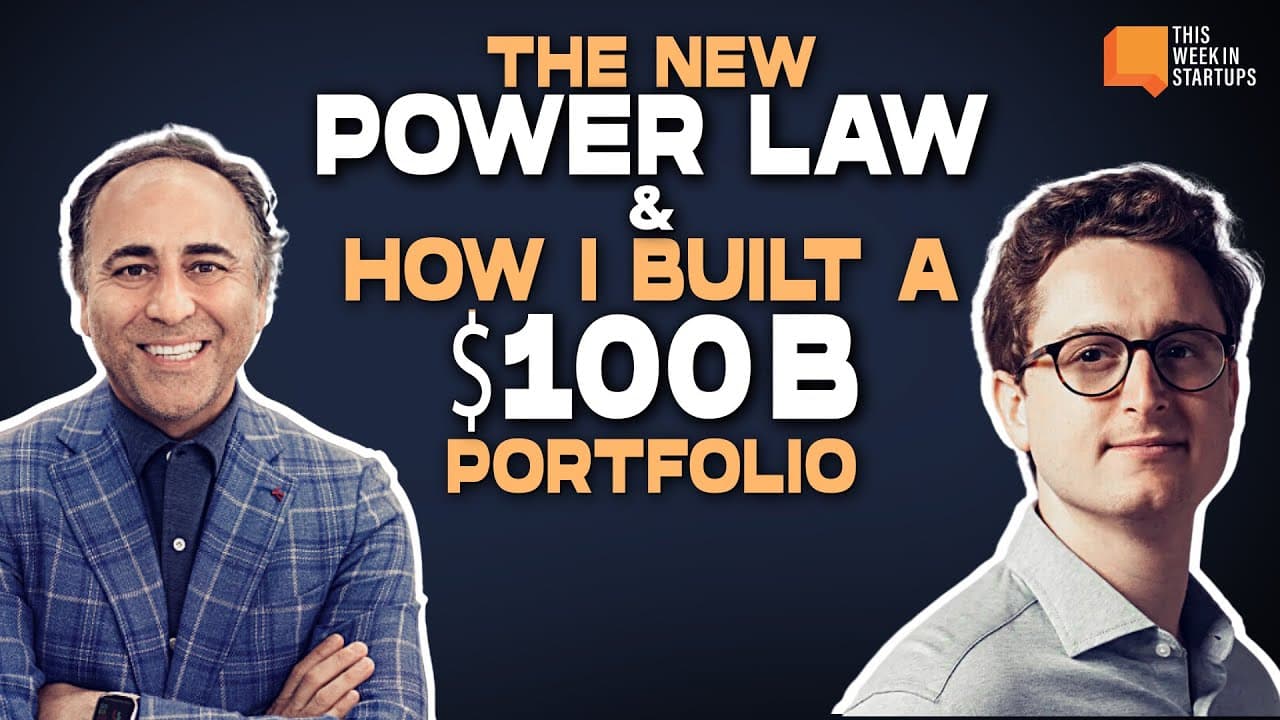The New Power Law & How I Built a $100B Portfolio! | E2007
12 Sep 2024 (8 months ago)

Jason joins Pejman Nozad and Jason Shuman at the Liquidity Summit 2024. (0s)
- Venture capitalists should prioritize sourcing the best founders early on. (9s)
- A third of the fund's investments are now incubated, allowing sector specialists to nurture companies with proven founders and operators. (16s)
- Pejman Nozad is being welcomed to speak about his success in venture capital over the past decade. (2m13s)
Pejman Nozad’s “How I Built a $100B Portfolio” (3m25s)
- Pejman Nozad is the co-founder and managing partner of Pear VC, a pre-seed and seed-stage venture capital firm. (3m26s)
- Nozad's journey in venture capital began after he immigrated to the United States from Iran and worked as a rug salesman, where he interacted with prominent venture capitalists and became interested in the industry. (8m0s)
- Nozad believes that success in venture capital requires patience, persistence, and the ability to identify and support promising companies and founders. (10m27s)
Tech Domains. Don’t miss our “Jam with JCal” contest! To apply and get more details go to (10m42s)
- A program called Female Founder Circle selects 100 top female engineers in the country each year to participate in a free 15-week program that helps them start companies. (14m42s)
- A portfolio construction strategy involves investing in 20-30 pre-seed companies at 250,000 to 2 million dollars for 7-15% of the company and 10-15 companies at 1.5 to 5 million dollars for 10-20% ownership. (19m43s)
- Pro-rata, or the ability to invest more in a company as it grows, is important, and it's not always necessary to own 20% of a company at the beginning, especially as companies are going public with valuations in the billions of dollars. (20m25s)
Fidelity Private Shares. Visit Mention our podcast and receive 20% off your first-year paid subscription. (21m34s)
- An investment strategy should be related to the fund size. For example, while a 2.5% stake in a company valued at \$50 billion may be a good investment for a large fund, it is not a sound strategy for a fund of \$432 million to assume that every company it invests in will reach a \$50 billion valuation. (22m30s)
- Maintaining a consistent ownership percentage of 2-3% in companies is not a viable strategy, as not every company will achieve a \$50 million valuation. Even if a fund were to achieve the same return as DoorDash, it would not be sufficient to generate a significant multiple on the initial investment. (22m51s)
- Sequoia Capital, Benchmark, and Y Combinator are three different firms with distinct investment strategies that have all achieved exceptional performance. Sequoia focuses on companies from Series A funding to IPO and beyond, Benchmark manages a \$400 million fund and primarily invests in Series A rounds, and Y Combinator operates as a large-scale startup accelerator. (23m9s)
Jason joins Pejman for a fireside chat. (23m50s)
- It is believed that the next wave of companies that go public will take 5-7 years, rather than 10-15. (27m27s)
- The most important things for early-stage companies to focus on are team, product, and customer. (35m21s)
- The best founders are paranoid in a healthy way, understand the market better than anyone else, are able to attract talent, are focused, and are able to learn and adapt. (29m12s)
Oracle. Save up to 50% on your cloud bill (36m33s)
- Oracle Cloud Infrastructure (OCI) is a comprehensive cloud platform that offers infrastructure, database, and app development tools, including built-in AI. (36m53s)
- OCI is cost-effective, offering up to 50% savings on computing and 80% on networking compared to other cloud providers. (37m11s)
- New OCI customers in the US can potentially cut their current cloud computing bill in half by switching to OCI until September 30th, 2024, subject to certain conditions. (37m32s)
Jason Shuman’s “The New Power Law: Good vs Great Funds” (38m2s)
- Jason Schuman, a general partner at Primary Venture Partners, discusses the power law in venture capital and the differences between good and great funds. (38m2s)
- Great funds achieve 10x or greater returns on investments more frequently than good funds, with a 14.1% success rate compared to a lower rate for good funds. (42m3s)
- Great funds concentrate capital in their most successful investments, allocating 38.7% of their capital to companies that return over 5x and 24% to companies that return over 10x. (43m48s)